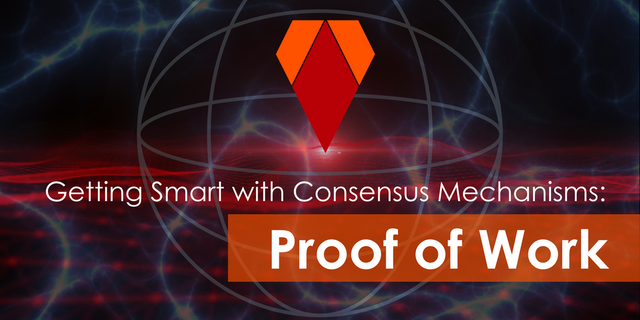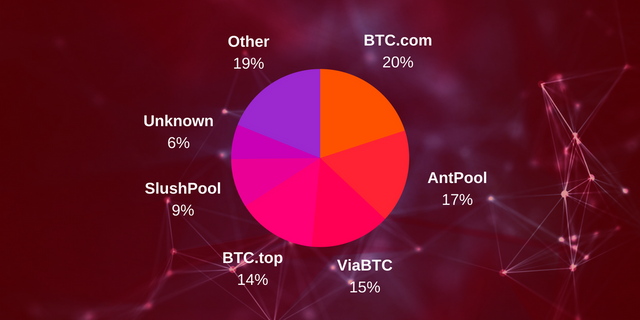.png)
Through the introduction of our series, you should be familiar with what consensus mechanisms are.
We’ve talked about perhaps one of the least used, and lesser-known consensus mechanisms. Now, we’ll cover the most widely known, and widely used consensus mechanisms, Proof of Work. You may often see it referred to as ‘PoW’ as well.
Proof of work is the original blockchain consensus mechanism, used by the world’s first cryptocurrency, Bitcoin. Bitcoin was created in 2009, by the mysterious Satoshi Nakamoto. Like other consensus mechanisms, Proof of Work is distributed, trustless, and immutable. It of course has advantages, but there’s disadvantages as well. We’ll explore how this mechanism works, as well as the pros and cons associated with it.
What exactly is Proof of Work?
Like other consensus mechanisms, the basis of the functions is in the name of the mechanism itself. In this case, the ‘work’ in Proof of Work, is the computation of complex mathematical equations. These equations are astonishingly difficult and require powerful computers to solve them. What’s interesting about blockchain networks like Bitcoin, that use PoW, is that the difficulty of these puzzles is based on the computational powers of the network. In the early days of Bitcoin, mining could be done on a laptop. Today, as the network has grown, it now requires specialized and much more powerful equipment to mine.
Nowadays, pools of miners work together to solve these intricate puzzles. These pools must compete with others, to find the solutions to these equations first. When a node solves the equation, or finds positive Proof of Work, it then broadcasts it to the entire network of nodes. The solution to one of these equations, is called a hash. When all nodes agree that positive PoW has been found, that node produces a block, and wins the block reward. The block reward is a fraction of the newly minted coins they produce. It is through this process of mining, that value of the coin is established.
The mining process happens in real time, and because of it’s complexity, can be a rather slow process when the network is experiencing a high-volume of transactions. Block times vary, while it’s expected that the network should produce one block about every ten minutes. Block times greatly depend on the hash power of the network at any given time.
So, what’s the advantage of Proof of Work, over other Consensus Mechanisms?
• On large, well established PoW systems, the probability of a 51% attack is relatively low. A 51% attack requires a hacker to control at least 51% of the networks hash power.
• It provides decentralization of power regarding technical and economic changes within the network.
• The system is well established and has historically performed correctly under large scale implementation.
Well there must be disadvantages, since blockchains use different Consensus Mechanisms, right?
• Smaller, less established PoW networks are more susceptible to 51% attacks. Take for example, the recent 51% attacks on Verge (XVG)
• The high cost of mining on large networks, such as Bitcoin, threaten the decentralized nature of the network. About 75% of the Bitcoin network can be attributed to only 5 mining pools.
• PoW requires massive amounts of energy to have the computing power necessary to solve the increasingly difficult problems.
• It requires expensive equipment, that need frequent repairs and updating. Every 14 days the parameter gets updates and miners must amend their computers’ settings.
• It is argued, that because of the high price of equipment, upkeep, and electricity, that the level of decentralization is threatened by the cost barrier.
• Scalability is limited, the capacity to process transactions by PoW systems such as Bitcoin, is only 1MB of data per block.
• In the Bitcoin network, users may elect to pay a higher fee to have their transaction go through faster. This is said to go against the ‘equal access for all’ intention that the network was designed for.
.png)
Is Proof of Work here to stay?
There’s nothing indicating complete abandonment of the Proof of Work system anytime soon. There have been numerous different solutions proposed to the many issues associated with it. Bitcoin’s lightening network, and Ethereum’s sharding among others. Many argue, that some of these possible solutions aren’t ‘really blockchain’ and aren’t as secure. It’s still yet to be seen, whether these possible solutions will in fact, solve the major issues.
Tumblr
Medium
Telegram
Global Communities

.png)
I think proof of stake is better than proof of work , as you can see ethereum is also trying to move from POW to POS
Downvoting a post can decrease pending rewards and make it less visible. Common reasons:
Submit
We definitely agree. Even more so, Delegated Proof of Stake ;)
Downvoting a post can decrease pending rewards and make it less visible. Common reasons:
Submit
I sent you guys an e-mail asking about the testnet and also the conversion from ERC-20 Tokens and how that is going to take place but I never got a response.
It was announced a couple of months ago that there was this testnet https://testnet.vit.tube but the faucet doesn't work to create accounts on it and content was never added to it. Is there another testnet?
Also how is the conversion from the ERC-20 Tokens to the mainnet coins going to take place?
Downvoting a post can decrease pending rewards and make it less visible. Common reasons:
Submit
The process for converting the ERC-20 tokens to the native VIT will be provided once you're able to do so, which will be after the platform launches on June 28th.
As for the testnet, it is for internal testing, so you won't be able to start an account on it as of yet. Very soon though! :)
Downvoting a post can decrease pending rewards and make it less visible. Common reasons:
Submit
Thanks for getting back to me. Also I'm wondering if the witness and seed nodes are just going to be operated internally from the start? I'm interesting in becoming a witness on the VIT blockchain when it launches.
Also I'm wondering if VIT is going to have the same inflation rate that STEEM currently has? Around 8% or so and reducing by 1% each year?
Downvoting a post can decrease pending rewards and make it less visible. Common reasons:
Submit
We're actually on-boarding witnesses now to secure the network. There's a discord channel for that if you'd like to contribute!
The inflation rate for VIT will start at 10%, and decrease by 1% each year, until it reaches 1%, and then will remain constant. Very similar STEEM, it just starts out a bit higher.
Downvoting a post can decrease pending rewards and make it less visible. Common reasons:
Submit
Ok, thank you!
Downvoting a post can decrease pending rewards and make it less visible. Common reasons:
Submit
Yes, I agree that POS is better.
Downvoting a post can decrease pending rewards and make it less visible. Common reasons:
Submit